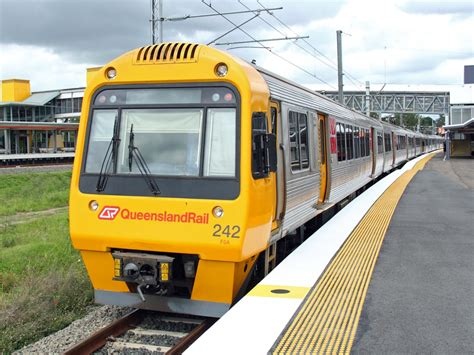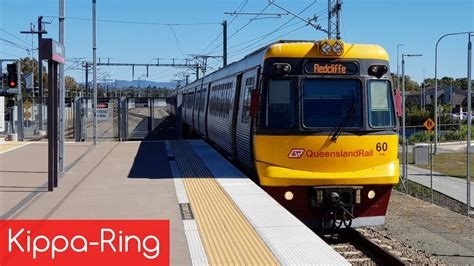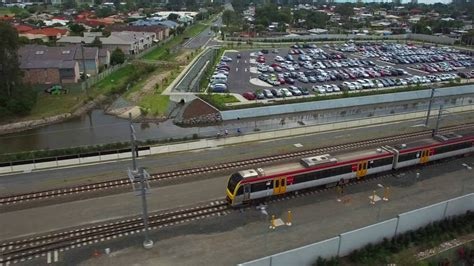Chart Color Schemes
est. as @ -- *
ABS ERP | -- people | --
2021 Census | -- people
Sales Activity
Curious about local property values? Filter the chart to assess the volume and appreciation (including resales) trends and regional comparisons, or scroll to the map below view this information at an individual property level.
Find a Recent Sale
Sales Detail
Population
Rothwell - Kippa-Ring is positioned among the lower quartile of areas assessed nationally for population growth based on AreaSearch's assessment of recent, and medium term trends
As of August 2025, Rothwell - Kippa-Ring's population is approximately 17,743, indicating a rise of 358 individuals since the 2021 Census. The 2021 Census reported a population of 17,385 people. This increase can be inferred from ABS estimates showing an estimated resident population of 17,628 in June 2024 and an additional 75 validated new addresses since the Census date. This results in a population density ratio of 1,152 persons per square kilometer, comparable to averages found across locations assessed by AreaSearch. Overseas migration was primarily responsible for this growth during recent periods.
AreaSearch adopts ABS/Geoscience Australia projections for each SA2 area, released in 2024 with a base year of 2022. For areas not covered and years post-2032, Queensland State Government's SA2 area projections from 2023, based on 2021 data, are used. Note that these state projections do not provide age category splits; hence proportional growth weightings in line with ABS Greater Capital Region projections (released in 2023, based on 2022 data) for each age cohort are applied where necessary. Considering projected demographic shifts, lower quartile growth of national statistical areas is anticipated. Rothwell - Kippa-Ring is expected to grow by 509 persons to reach a population of approximately 18,262 by 2041 based on the latest population numbers, reflecting an increase of about 2.2% in total over the 17 years.
Frequently Asked Questions - Population
Development
AreaSearch assessment of residential development drivers sees a low level of activity in Rothwell - Kippa-Ring, placing the area among the bottom 25% of areas assessed nationally
Rothwell-Kippa-Ring has seen around 79 new homes approved each year. Development approval data is produced by the ABS on a financial year basis, totalling 395 approvals across the past five financial years from FY20 to FY25, with 27 approvals so far in FY26. The population has declined over recent years, but development activity has been adequate relative to demand, creating a well-balanced market with good buyer choice, while new properties are constructed at an average value of $331,000, reflecting more affordable housing options for purchasers. Additionally, $27.5 million in commercial development approvals have been recorded this financial year, demonstrating moderate levels of commercial development.
Compared to Greater Brisbane, Rothwell-Kippa-Ring records markedly lower building activity, 73.0% below the regional average per person, which typically strengthens demand and prices for existing properties. This activity is also below average nationally, reflecting the area's maturity and possible planning constraints. New building activity shows 48.0% standalone homes and 52.0% medium and high-density housing, offering affordable entry pathways and attracting downsizers, investors, and first-time purchasers, marking a notable shift from the area's existing housing composition of 74.0% houses. With around 939 people per approval, Rothwell-Kippa-Ring shows a mature, established area with an expected growth of 394 residents through to 2041. Current construction levels should adequately meet demand, creating favourable conditions for buyers while potentially enabling growth that exceeds current forecasts.
Looking ahead, Rothwell - Kippa-Ring is expected to grow by 394 residents through to 2041. With current construction levels, housing supply should adequately meet demand, creating favourable conditions for buyers while potentially enabling growth that exceeds current forecasts.
Frequently Asked Questions - Development
Infrastructure
Rothwell - Kippa-Ring has moderate levels of nearby infrastructure activity, ranking in the 46thth percentile nationally
The performance of an area can significantly influenced by changes in local infrastructure, major projects, and planning initiatives. AreaSearch has identified 38 such projects that could impact this particular area. Notable ones include Rothwell Shopping Centre Expansion, Redcliffe Peninsula Technology Hub, Redcliffe Hospital Mental Health Unit, and Peninsula Private Hospital Expansion. The following list details those considered most relevant.
Professional plan users can use the search below to filter and access additional projects.
INFRASTRUCTURE SEARCH
Frequently Asked Questions - Infrastructure
Redcliffe Peninsula Rail Line (Moreton Bay Rail Link)
A $1.2 billion 12.6km dual-track electrified passenger rail line between Petrie and Kippa-Ring with six stations: Petrie, Kallangur, Murrumba Downs, Mango Hill, Mango Hill East, Rothwell and Kippa-Ring. Completed in 2016, it provides 45-minute travel times to Brisbane CBD and serves more than 6,000 daily passengers. The line provides 650 weekly train services with trains every 6-12 minutes during peak times and includes the $37.5 million Rothwell Intersection Upgrade. Park-and-ride facilities total 2,850 car spaces across all stations, with integrated bus interchanges and a 3-meter wide shared pathway for pedestrians and cyclists along the entire corridor.

Redcliffe Peninsula Foreshore Masterplan
Comprehensive urban renewal and waterfront activation initiative spanning 14km of foreshore from Clontarf to Scarborough. Integrates residential developments, commercial precincts, cultural facilities, marine infrastructure, and environmental restoration to create a world-class coastal destination while preserving heritage values.

Kippa-Ring Train Station Precinct
Transit-oriented development anchored by the new Kippa-Ring railway station, northern terminus of the Redcliffe Peninsula Line. Includes station facilities, park-and-ride infrastructure, bus interchange, cycling facilities, and adjacent commercial development.

Redcliffe Hospital Mental Health Unit
New purpose-built mental health facility providing 24-bed inpatient unit, emergency assessment areas, outpatient services, and community mental health programs. Designed with therapeutic environments and family-friendly spaces to serve the Moreton Bay region.

Redcliffe Peninsula Technology Hub
Innovation district leveraging proximity to rail infrastructure and Brisbane connectivity. Mixed-use development featuring co-working spaces, startup incubators, research facilities, residential apartments, and supporting retail/hospitality services.

Redcliffe Airport Business Park
Aviation-focused business park development leveraging the airport's strategic location. Planned facilities include aircraft maintenance hangars, logistics centres, aviation training academy, and supporting commercial services.

Peninsula Private Hospital Expansion
Major redevelopment of the 70-bed acute surgical and rehabilitation hospital to expand perioperative capacity and improve inpatient care. Works include four new operating theatres, two procedure rooms, a new high dependency unit, refurbished wards with single rooms, upgraded CSSD and support spaces on the 14,600 sqm site, ensuring increased surgical throughput and improved patient experience for the Moreton Bay region.

Mango Hill Urban Village
Massive 10.4-hectare urban precinct featuring 23 towers (8-30 storeys) with 2,329 apartments, 118,023 sqm commercial space, 6,600 sqm retail/dining, and 1.23 hectares green space. Located 400m from Mango Hill train station. Expected to create 12,000 jobs and house 5,000 people. Developed by Pace family (former Pace Farm owners) with Archipelago architects.

Employment
Employment conditions in Rothwell - Kippa-Ring remain below the national average according to AreaSearch analysis
Rothwell-Kippa Ring had an unemployment rate of 4.6% as of June 2025 with estimated employment growth of 11.9% over the past year. The area had 8,035 residents in work while its unemployment rate was 0.5% higher than Greater Brisbane's rate of 4.1%.
Workforce participation lagged significantly at 52.6%, compared to Greater Brisbane's 64.5%. Leading employment industries among residents were health care & social assistance, retail trade, and construction. Professional & technical services employed just 4.7% of local workers, below Greater Brisbane's 8.9%.
Employment increased by 11.9% over the 12 months to June 2025 while labour force increased by 8.2%, causing a drop in unemployment rate by 3.1 percentage points. In contrast, Greater Brisbane experienced employment growth of 4.4% and labour force growth of 4.0%, with a 0.4 percentage point drop. State-level data to Sep-25 showed Queensland employment contracted by 0.23% (losing 8,070 jobs) with the state unemployment rate at 4.2%. National unemployment rate was 4.5% with national employment growth of 0.26%. Jobs and Skills Australia's national employment forecasts from May 2025 projected national employment to expand by 6.6% over five years and 13.7% over ten years. Applying these projections to Rothwell-Kippa Ring's employment mix suggested local growth of approximately 6.5% over five years and 13.6% over ten years.
Frequently Asked Questions - Employment
Income
Income figures position the area below 75% of locations analysed nationally by AreaSearch
Rothwell-Kippa Ring's median income among taxpayers was $47,605 in financial year 2022. The average income stood at $54,041 during the same period. In Greater Brisbane, the median income was $55,645 and the average was $70,520. By March 2025, based on a 11.71% growth in wages since financial year 2022, Rothwell-Kippa Ring's estimated median income is approximately $53,180 and the average is around $60,369. According to the 2021 Census, incomes in Rothwell-Kippa Ring fell between the 16th and 20th percentiles nationally for households, families, and individuals. The largest income segment comprised 30.6% earning $1,500 - $2,999 weekly, with a resident population of 5,429. This trend is consistent with the surrounding region, where 33.3% fell into the same category. Housing affordability pressures are severe in Rothwell-Kippa Ring, with only 81.0% of income remaining after housing costs, ranking at the 18th percentile nationally.
Frequently Asked Questions - Income
Housing
Rothwell - Kippa-Ring is characterized by a predominantly suburban housing profile, with a higher proportion of rental properties than the broader region
Rothwell-Kippa Ring's dwelling structure, as per the latest Census, had 74.1% houses and 26.0% other dwellings (semi-detached, apartments, 'other' dwellings), compared to Brisbane metro's 68.2% houses and 31.8% other dwellings. Home ownership in Rothwell-Kippa Ring was at 32.6%, similar to Brisbane metro, with the rest being mortgaged (29.4%) or rented (38.0%). The median monthly mortgage repayment in the area was $1,625, lower than Brisbane metro's average of $1,733. Median weekly rent in Rothwell-Kippa Ring was $360, slightly higher than Brisbane metro's figure of $350. Nationally, Rothwell-Kippa Ring's mortgage repayments were significantly lower than the Australian average of $1,863, and rents were less than the national figure of $375.
Frequently Asked Questions - Housing
Household Composition
Rothwell - Kippa-Ring has a typical household mix, with a higher-than-average median household size
Family households are the majority, making up 68.6% of all households. They include couples with children at 25.6%, couples without children at 26.2%, and single parent families at 15.7%. Non-family households constitute the remaining 31.4%, with lone person households being 28.1% and group households comprising 3.2% of the total. The median household size is 2.5 people, which is larger than the Greater Brisbane average of 2.3.
Frequently Asked Questions - Households
Local Schools & Education
Educational outcomes in Rothwell - Kippa-Ring fall within the lower quartile nationally, indicating opportunities for improvement in qualification attainment
The area has lower university qualification rates at 14.1% compared to Greater Brisbane's 30.5%. Bachelor degrees are the most common at 10.5%, followed by postgraduate qualifications and graduate diplomas each at 1.8%. Vocational credentials are held by 41.3% of residents aged 15+, with advanced diplomas at 11.2% and certificates at 30.1%. Educational participation is high, with 28.1% currently enrolled in formal education: primary (10.4%), secondary (8.8%), and tertiary (3.4%).
Rothwell - Kippa-Ring's five schools have a combined enrollment of 4,358 students. The area has typical Australian school conditions with balanced educational opportunities, functioning as an education hub with 24.7 school places per 100 residents, higher than the regional average of 16.2.
Frequently Asked Questions - Education
Schools Detail
Nearby Services & Amenities
Transport
Transport servicing is good compared to other areas nationally based on assessment of service frequency, route connectivity and accessibility
Rothwell-Kippa-Ring has 66 active public transport stops serving a mix of train and bus routes. These stops are served by 34 individual routes that collectively facilitate 4099 weekly passenger trips. The area's transport accessibility is rated good, with residents typically located 274 meters from the nearest stop.
Service frequency averages 585 trips per day across all routes, equating to approximately 62 weekly trips per stop.
Frequently Asked Questions - Transport
Transport Stops Detail
Health
Health performance in Rothwell - Kippa-Ring is a key challenge with a range of health conditions having marked impacts on both younger and older age cohorts
Rothwell-Kippa Ring faces significant health challenges, with various conditions affecting both younger and older residents. Private health cover stands at approximately 47%, covering around 8339 people, which is lower than Greater Brisbane's 51.3% and the national average of 55.3%. Arthritis and mental health issues are the most prevalent conditions, affecting 10.7% and 10.2% of residents respectively.
About 58.7% of residents report no medical ailments, compared to 59.7% in Greater Brisbane. As of 2021, around 25.7% of residents are aged 65 and over (4565 people), lower than the 28.2% in Greater Brisbane. Senior health outcomes align with the general population's health profile.
Frequently Asked Questions - Health
Cultural Diversity
In terms of cultural diversity, Rothwell - Kippa-Ring records figures broadly comparable to the national average, as found in AreaSearch's assessment of a number of language and cultural background related metrics
Rothwell-Kippa-Ring, as per the 2016 Census, had a cultural diversity profile roughly similar to Greater Brisbane's average. It was reported that 86.3% of its residents were Australian citizens, with 77.4% having been born in Australia and 92.0% speaking English at home exclusively. Christianity dominated the religious landscape in Rothwell-Kippa-Ring, comprising 53.3% of the population, which was slightly higher than Greater Brisbane's average of 52.8%.
In terms of ancestry, the top three groups were English (30.9%), Australian (26.7%), and Irish (7.8%). Notably, Maori (1.9%) and Samoan (1.3%) populations were overrepresented compared to Greater Brisbane's averages of 1.4% and 0.7%, respectively. Additionally, New Zealand-born residents made up 1.2% of Rothwell-Kippa-Ring's population compared to the regional average of 1.1%.
Frequently Asked Questions - Diversity
Age
Rothwell - Kippa-Ring hosts an older demographic, ranking in the top quartile nationwide
The median age in Rothwell-Kippa-Ring is 43 years, significantly higher than Greater Brisbane's average of 36 years and Australia's national average of 38 years. The 75-84 age group constitutes 10.5% of the population, compared to Greater Brisbane, while the 25-34 age group makes up 9.4%. Post-2021 Census data reveals that the 75-84 age group has increased from 8.9% to 10.5%, and the 25-34 age group has decreased from 10.3% to 9.4%. By 2041, population forecasts indicate substantial demographic shifts in Rothwell-Kippa-Ring. The 75-84 age group is projected to grow by 36%, reaching 2,535 people from 1,870. Notably, the combined 65+ age groups are expected to account for 85% of total population growth, reflecting the area's aging demographic profile. Conversely, the 15-24 and 0-4 age cohorts are projected to experience population declines.






